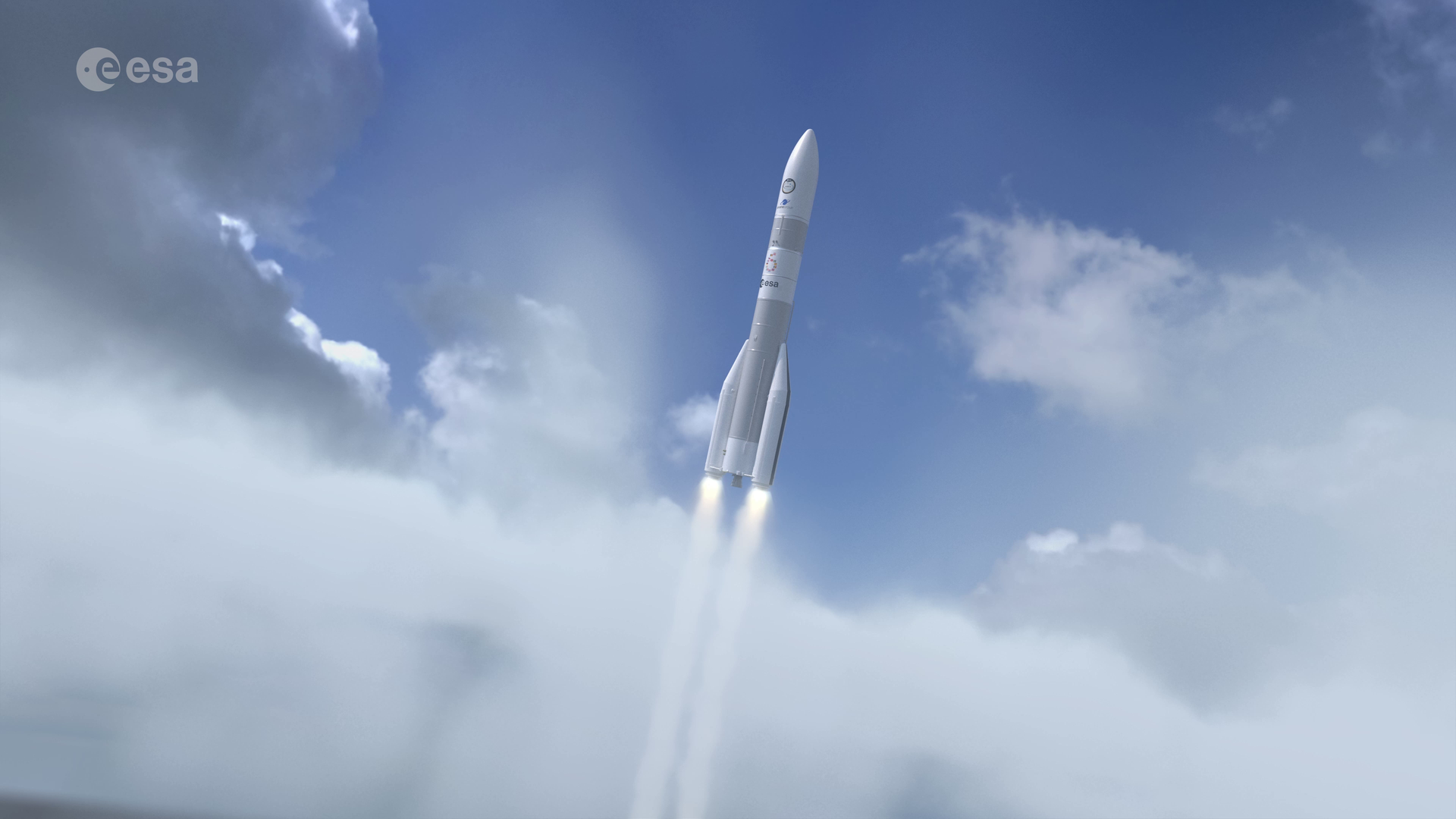Planet hunter Plato to fly on Ariane 6
Today, the European Space Agency (ESA) Director of Science, Carole Mundell, ESA Director of Space Transportation, Toni Tolker-Nielsen, and Arianespace Chief Commercial Officer, Steven Rutgers, signed the launch agreement to fly ESA’s scientific mission Plato; the formal step took place at the European Space Conference in Brussels, Belgium.

Plato, PLAnetary Transits and Oscillations of stars, is ESA’s groundbreaking mission to discover potentially habitable planets around stars similar to our Sun, and study thousands of exoplanets in detail, focusing on terrestrial ones.
Plato will board the Ariane 6 with two boosters for a launch from Europe’s Spaceport, in French Guiana, end of 2026, and will be placed into orbit around the Sun-Earth Lagrange point L2.
“This is the first science mission that our new rocket Ariane 6 will launch,” said Toni Tolker-Nielsen, “and the first mission that the versatile launcher will send to the Lagrange point 2, 1.5 million km from the launch pad, a new destination for our heavy-lift rocket to show its prowess.”
“Most of ESA’s Science flagship missions have been launched on Ariane rockets. From Rosetta to Webb and Juice, Arianespace has ensured exquisitely accurate delivery of our precious technologies into deep space, increasing mission lifetimes and scientific performance,” added Carole Mundell. “So it comes naturally to launch Plato on Europe’s newest rocket, confident that it will take our spacecraft exactly where it must be.”


Access the video
Ariane 6 first flight was in July last year with its second flight planned for next month, ramping up launches over the coming months. Ariane 6 is Europe’s newest heavy-lift rocket, designed to provide great power and flexibility at a lower cost than its predecessors. The launcher’s configuration – with an upgraded main stage, a choice of either two or four powerful boosters and a new restartable upper stage – provides Europe with greater efficiency and possibility for launching all manner of missions.
“Plato’s launch with Ariane 6 continues Ariane’s key role in the quest to discover other worlds and answer fundamental questions about life beyond Earth,” remarked David Cavaillolès, CEO of Arianespace. “We express our pride and gratitude towards our historic partner the European Space Agency for their trust. Our teams are most enthusiast to closely working together to bring this extraordinary European exploration spacecraft to orbit with Ariane 6.”
Planet hunter Plato will focus on the properties of rocky planets orbiting Sun-like stars. In particular, Plato will discover and characterise planets in orbits up to the habitable zone – the ‘goldilocks’ region around a star where the temperature is just right for liquid water to exist on a planet’s surface.
To achieve its feat, Plato will use 26 cameras to look at more than 200 000 stars and search for planets around them. The mission exploits the transit method to characterise these planets; when planets pass by the face of their host stars, they dim the starlight we receive. By studying this dimming effect, we can learn about a planet’s size, mass and density.

Plato's scientific instrumentation, consisting of the cameras and electronic units, is provided through a collaboration between ESA and the Plato Mission Consortium. This Consortium is composed of various European research centres, institutes and industries.
The spacecraft is being built and assembled by the industrial Plato Core Team led by OHB together with Thales Alenia Space and Beyond Gravity.
Contact:
ESA Media relations
media@esa.int














 Germany
Germany
 Austria
Austria
 Belgium
Belgium
 Denmark
Denmark
 Spain
Spain
 Estonia
Estonia
 Finland
Finland
 France
France
 Greece
Greece
 Hungary
Hungary
 Ireland
Ireland
 Italy
Italy
 Luxembourg
Luxembourg
 Norway
Norway
 The Netherlands
The Netherlands
 Poland
Poland
 Portugal
Portugal
 Czechia
Czechia
 Romania
Romania
 United Kingdom
United Kingdom
 Slovenia
Slovenia
 Sweden
Sweden
 Switzerland
Switzerland


























